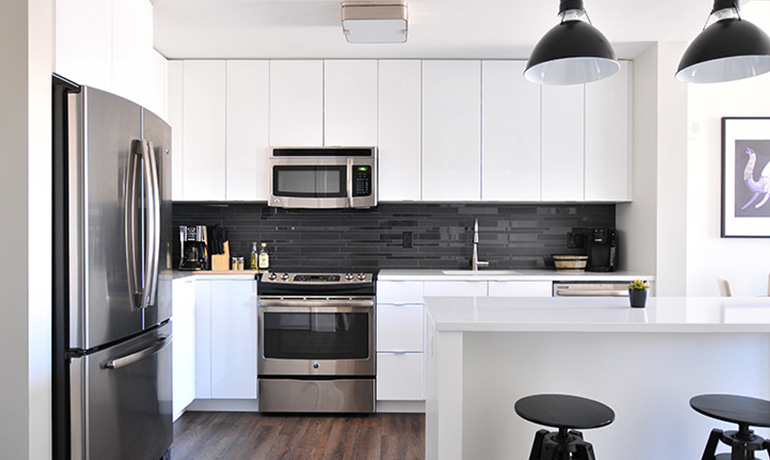Various Approaches to Taking Screenshots on a MacBook
Taking screenshots on a MacBook is simple, and there are multiple methods available to effortlessly capture your screen. Here are three ways to take screenshots on your MacBook:
-
Capture the Entire Screen: To capture the entire screen, press Command (⌘) + Shift (⇧) + 3 simultaneously. The screenshot will be saved as a PNG file on your desktop. For optimal results, close unnecessary windows or applications before taking the screenshot.
-
Capture a Selected Portion of the Screen: If you only want to capture a specific portion of your screen, press Command (⌘) + Shift (⇧) + 4. Your cursor will turn into a crosshair, allowing you to select the desired area by clicking and dragging. Once you release the mouse button, the screenshot will be saved as a PNG file on your desktop. Remember to hold down the Option (⌥) key while dragging to lock the selected area’s height or width.
-
Capture a Specific Window: To capture a specific window, press Command (⌘) + Shift (⇧) + 4, followed by the Spacebar. Your cursor will transform into a camera icon, and you can click on the window you want to capture. The screenshot will be saved as a PNG file on your desktop. For optimal results, ensure that the desired window is in the foreground and unobstructed by other windows.
Becoming a Screenshot Pro with the MacBook Shortcut
Now that you are aware of the various methods to take screenshots on your MacBook, let’s delve deeper into mastering the screenshot shortcut. Follow these steps to become a screenshot pro:
-
Customize the Screenshot Save Location: By default, screenshots are saved on your desktop. However, you can change the save location to a folder of your choice. To do this, open the Terminal app (found in the Utilities folder within the Applications folder) and enter the following command:
defaults write com.apple.screencapture location /path/to/folder. Replace/path/to/folderwith the desired folder’s path. After entering the command, restart the SystemUIServer process by enteringkillall SystemUIServerin the Terminal. -
Capture Screenshots in Different Formats: By default, screenshots are saved as PNG files. However, you can change the format to JPEG, PDF, or other options. To change the format, open the Terminal app and enter the command:
defaults write com.apple.screencapture type format. Replaceformatwith the desired format (e.g., jpg, pdf, tiff, etc.). After entering the command, restart the SystemUIServer process as mentioned in the previous step. -
Utilize the Screenshot Toolbar: Starting from macOS Mojave, Apple introduced a convenient screenshot toolbar that appears at the bottom of the screen after taking a screenshot. This toolbar allows you to quickly edit, annotate, and share your screenshots without opening any additional apps. To access the toolbar, click on the screenshot thumbnail that appears in the bottom-right corner of the screen after capturing a screenshot.
By following these step-by-step instructions, you can effortlessly take screenshots on your MacBook using different methods and master the screenshot shortcut. Whether you need to capture the entire screen, a selected portion, or a specific window, these techniques will help you capture and save screenshots efficiently. Experiment with the customization options and utilize the screenshot toolbar to enhance your screenshot-taking experience on your MacBook.
Do you want to take a screenshot on your Macbook? If so, you’ve come to the right place. This article will give you a complete guide on how to take a screenshot on your Macbook, as well as a few shortcuts for taking multiple types of screenshots.
Taking a screenshot on your Macbook computer is simple. On your keyboard, press the keys “Command”, “Shift”, and “3” all at the same time. Doing so should take a screenshot of your entire display screen, and store the image on your Desktop. Your file name should be “Screen Shot” followed by the current date and time.
If you would like to take a screenshot of a particular area of the display screen, such as an individual window or a portion of the screen, use the shortcut “Command”, “Shift”, and “4”. Doing so will bring up a small crosshair so that you can select the area of the screen that you would like to capture. Once you make your selection, your screenshot will be saved on your desktop with the same format as mentioned earlier.
Finally, if you want to take a screenshot of a specific window, rather than your entire screen, use the shortcut “Command” “Shift” and “4”. Then, press the Space Bar, select the window, and click your mouse or trackpad. Your screenshot will be saved on your desktop with the same file name format mentioned before.
In conclusion, taking a screenshot on your Macbook is a straightforward process. Just remember the shortcuts mentioned here and you should be able to take a screenshot in no time. Happy screenshotting!


